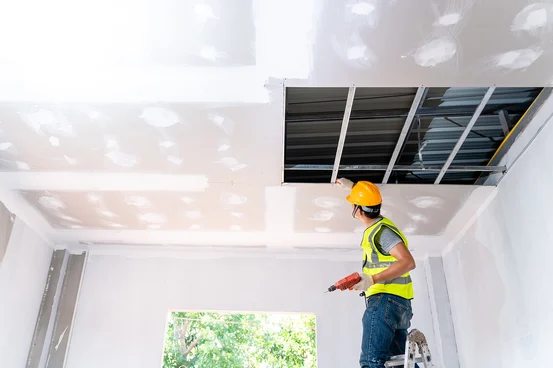The Health Risks of Water Damage
Water damage can be a homeowner’s worst nightmare, causing significant structural issues and posing serious health risks. From mold growth to contaminated water, the aftermath of water damage can have severe consequences for your health. Understanding these risks is crucial for protecting yourself and your family. Here’s an in-depth look at the health risks of water damage and how to address them effectively.
Mold Growth
Mold is one of the most common and dangerous consequences of water damage. It can spread quickly and pose serious health risks if not addressed promptly. For effective solutions to mitigate mold and water damage, consider contacting Quick-Dry Flood Services in San Diego.
How Mold Affects Health
Mold spores thrive in damp environments and can spread rapidly after water damage.
- Allergic Reactions: Mold exposure can trigger allergic reactions, including sneezing, coughing, skin rashes, and itchy eyes.
- Respiratory Issues: Inhaling mold spores can lead to respiratory problems, especially in individuals with asthma or compromised immune systems.
- Toxic Mold: Certain types of mold, such as Stachybotrys chartarum (black mold), produce mycotoxins that can cause more severe health issues, including neurological problems.
Preventing and Removing Mold
Taking prompt action is essential to prevent mold growth after water damage.
- Drying: Quickly dry all affected areas using fans, dehumidifiers, and ventilation. Remove and discard water-damaged materials like carpets and drywall.
- Cleaning: Use a bleach solution (1 cup of bleach per gallon of water) to clean and disinfect hard surfaces.
- Professional Help: Consider hiring professional mold remediation services if the mold growth is extensive.
Contaminated Water
Water damage often involves contaminated water, posing various health hazards. It’s crucial to address such issues promptly to minimize risks. To ensure you receive immediate response, consult professional services equipped to handle these emergencies efficiently.
Categories of Water Contamination
Understanding the different categories of water contamination can help you assess the risks.
- Category 1 (Clean Water): Water from clean sources like broken supply lines. Generally, it poses minimal health risks if addressed promptly.
- Category 2 (Gray Water): Water from appliances or plumbing fixtures, containing contaminants that can cause illness if ingested or contacted.
- Category 3 (Black Water): Highly contaminated water, such as sewage or floodwaters, contains harmful pathogens and toxins.
Health Risks of Contaminated Water
Exposure to contaminated water can lead to several health issues.
- Infections: Bacteria, viruses, and parasites in contaminated water can cause gastrointestinal infections, skin infections, and other illnesses.
- Chemical Hazards: Contaminated water may contain hazardous chemicals that can cause burns, rashes, and respiratory problems.
- Toxic Exposure: Long-term exposure to certain contaminants can lead to chronic health conditions, including liver and kidney damage.
Mitigating Risks of Contaminated Water
Proper precautions and prompt action can mitigate the health risks of contaminated water.
- Protective Gear: Wear protective clothing, gloves, and masks when dealing with contaminated water.
- Disinfection: Thoroughly disinfect all affected areas using appropriate cleaning agents.
- Professional Cleanup: For severe contamination, hire professional water damage restoration services to ensure safe and effective cleanup.
Fun Facts About Water Damage and Health
- Historical Floods: The 1931 China floods are considered one of the deadliest natural disasters, leading to significant waterborne disease outbreaks.
- Mold Discovery: Mold spores were discovered to be linked to respiratory illnesses in the early 20th century, leading to advancements in mold remediation practices.
Structural Damage and Indoor Air Quality
Water damage can compromise the structural integrity of your home, affecting indoor air quality.
Impact on Indoor Air Quality
Structural damage from water can release harmful particles into the air.
- Dust and Debris: Water damage can cause building materials to break down, releasing dust and debris into the air.
- Volatile Organic Compounds (VOCs): Damaged materials may release VOCs, which can cause headaches, dizziness, and respiratory issues.
- Mold Spores: Mold growth due to water damage further deteriorates indoor air quality, leading to respiratory problems.
Addressing Structural Damage
Repairing structural damage is essential to maintaining a healthy indoor environment.
- Inspection: Conduct a thorough inspection to identify all areas of structural damage.
- Repairs: Replace damaged materials, including drywall, insulation, and flooring, to prevent further contamination.
- Air Purification: Use air purifiers with HEPA filters to remove airborne particles and improve air quality.
Psychological Impact
The stress and anxiety resulting from water damage can also affect mental health.
Psychological Effects
Dealing with water damage can lead to emotional and psychological distress.
- Stress: The immediate aftermath of water damage, including cleanup and repairs, can be overwhelming and stressful.
- Anxiety: Concerns about potential health risks and financial burdens can cause anxiety.
- Displacement: Temporary displacement from your home due to severe water damage can disrupt daily life and lead to emotional distress.
Coping Strategies
Effective coping strategies can help manage the psychological impact of water damage.
- Support Systems: Rely on family, friends, and professional support to help navigate the challenges of recovery.
- Stress Management: Practice stress management techniques such as deep breathing, meditation, and exercise.
- Professional Help: Consider seeking professional counseling or therapy to address severe stress and anxiety.
Understanding the health risks of water damage is crucial for taking appropriate action to protect yourself and your family. From mold growth and contaminated water to compromised indoor air quality and psychological stress, water damage can have far-reaching effects on health and well-being. By promptly addressing water damage, ensuring thorough cleanup and repairs, and implementing preventive measures, you can mitigate these risks and maintain a safe, healthy living environment. Being informed and proactive is the key to effectively managing the aftermath of water damage and safeguarding your health.
Keep an eye for more latest news & updates on Fashionable Pro!




